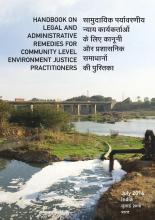Land Library
Bienvenue dans la bibliothèque du Land Portal. Explorez notre vaste collection de ressources en libre accès (plus de 74 000), comprenant des rapports, des articles scientifiques, des articles de recherche, des publications évaluées par des pairs, des documents juridiques, des vidéos et bien plus encore.
/ library resources
Showing items 1 through 9 of 31.Access to homestead land, and housing in turn, are basic requirements for human survival. Every citizen needs to have a safe, secure and healthy place to live, work and lead a life of dignity.
This report produced by Centre for Policy Research (CPR) a comprehensive and systematic study of Supreme Court cases on land acquisition from 1950- 2016 and examined particular conflicts involving major dams, special economic zones, housing complexes and industrial projects.
Following the end of apartheid, South Africa’s government set itself ambitious goals with a planned land reform. However, there have since been barely any changes in the country’s agricultural structure, and the positive impacts that were hoped for on rural livelihoods have hardly materialised.
The year 2016 marks 15 years since the new wave land reforms became operational in Tanzania. Despite its ambitious goals – encouraging land registration and titling, and empowering women and other vulnerable groups – the results are disillusioning.
The handbook does not specifically list judicial and court related remedies to any of these problems.
The paper gives historical background of the land acquisition process in India and the struggle since 1824. It descrbed the political processes in which the LARR Act 2013 came into being in Indian Parliament.
This report is in pursuance of the communication of the NITI Aayog, Govt. of India, vide order No.
This new policy brief was commissioned by the Foundation for Ecological Security (FES) and has been co-authored by Shalini Bhutani and Kanchi Kohli. It captures in one document the SC’s judgement, the course it has taken there after and the policy options that prevail.
This brief presents an analysis of the actual mechanics of these regulations, and how they relate to each other. In doing so, authoher reaches exactly the opposite conclusion of the government of India and the financial media.



